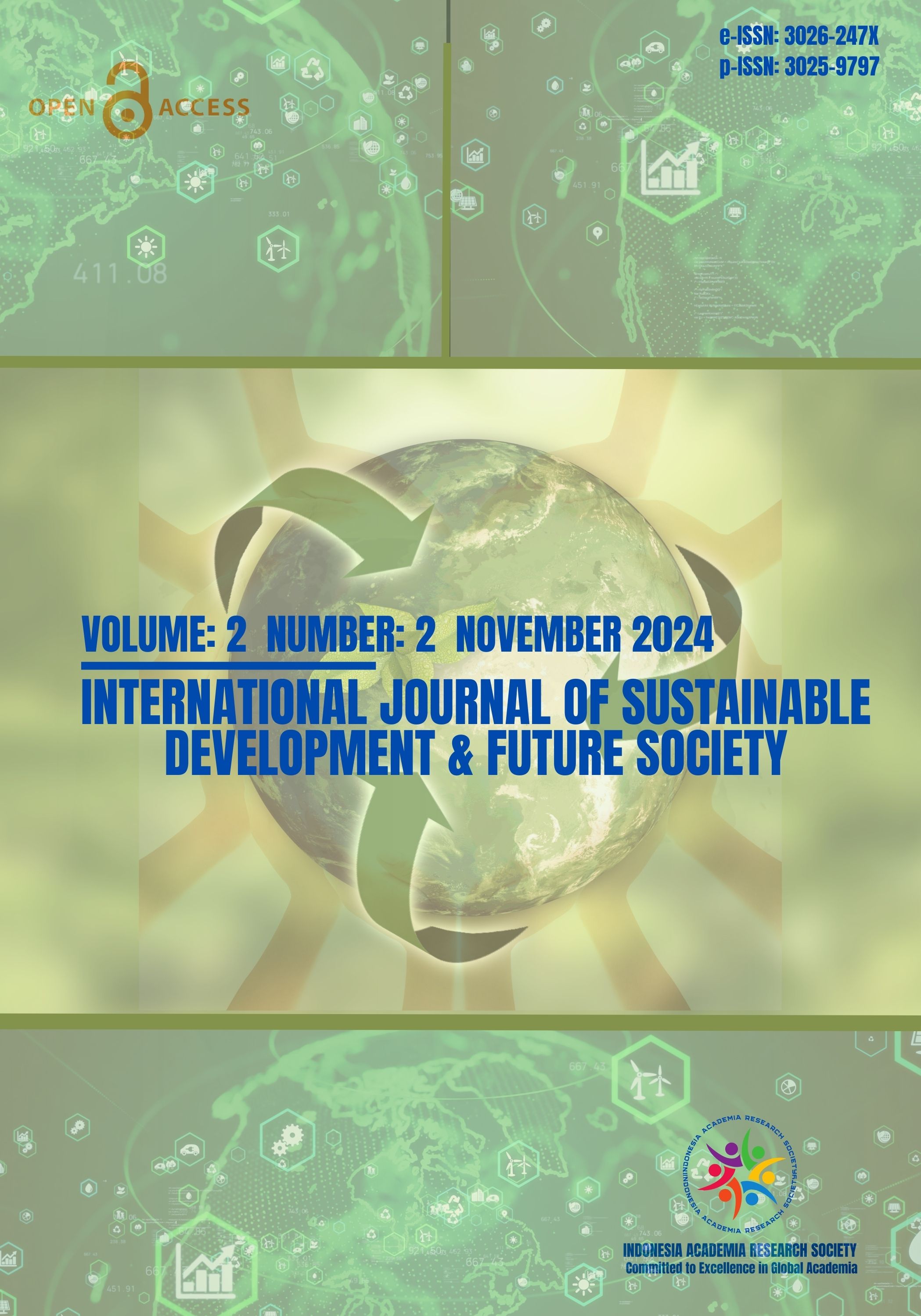Application of Augmented Reality-Based Learning Technology to Information Processing and Memory in Vocational High Schools: A Literature Review
https://doi.org/10.62157/ijsdfs.v2i2.72
Keywords:
Augmented reality, Vocational high schools, Learning technology, Information processing memory, Technical skillsAbstract
This study explores the benefits and challenges of implementing Augmented Reality (AR) technology to enhance learning effectiveness in Vocational High Schools (SMKs), particularly in improving students’ memory and understanding of technical concepts. Through a literature review, this research focuses on studies involving SMK students as the primary participants, with teachers providing additional insights to assess the readiness and impact of AR in vocational education. AR technology offers interactive, three-dimensional simulations in real-world environments, such as workplaces, allowing students to develop technical skills in a practical, safe, and immersive setting. In vocational education, AR has been found to improve students’ memory retention and conceptual comprehension, helping them grasp complex information and technical procedures necessary for fields like automotive, welding, and machining. This technology effectively overcomes the limitations of traditional learning methods, which often struggle to represent abstract concepts visually. Despite these advantages, the implementation of AR in SMKs faces significant challenges. Key obstacles include limited budgets, inadequate infrastructure, and a lack of technical expertise among educators. The high costs associated with AR hardware and software remain a barrier for many SMKs, particularly in Indonesia. Also, successful integration of AR requires extensive teacher training to ensure effective use of the technology in the curriculum. The literature review identifies the benefits of AR, the challenges involved, and potential solutions for its successful implementation. The findings are intended to guide educational institutions and policymakers in developing effective, efficient, and sustainable strategies for incorporating AR into vocational high schools.
References
Agrawal, R., & Pillai, J. S. (2020). Augmented Reality application in vocational education: A case of welding training. In Companion Proceedings of the 2020 Conference on Interactive Surfaces and Spaces (pp. 23-27). https://doi.org/10.1145/3380867.3426199
Akçayır, M., & Akçayır, G. (2017). Advantages and challenges associated with Augmented Reality for education: A systematic review of the literature. Educational research review, 20, 1-11. https://doi.org/10.1016/j.edurev.2016.11.002
Arief, U., Wibawanto, H., & Nastiti, A. (2018). Augmented Reality technology for vocational education the disruption era. In International Conference on Indonesian Technical Vocational Education and Association (APTEKINDO 2018) (pp. 73-76). Atlantis Press.
Aryawan, F. N. (2023). Overcoming the Challenges of Vocational Education in Indonesian SMK: Ideas on Curriculum Improvement, Teaching Quality, And English Language Teaching. Journal of Practice Learning and Educational Development, 3(3), 243-252. DOI: 10.58737/jpled.v3i3.226
Atkinson, R. C. & Shiffrin, R. M. (1968). Human memory: A proposed system and its control processes. The psychology of learning and motivation, 2, 89-195. https://doi.org/10.1016/S0079-7421(08)60422-3
Badan Pusat Statistik. (2024). Tingkat Pengangguran Terbuka Berdasarkan Tingkat Pendidikan, 2021-2023. [Online]. Diakses dari https://www.bps.go.id/id/statistics-table/2/MTE3OSMy/tingkat-pengangguran-terbuka-berdasarkan-tingkat-pendidikan.html
Efendi, A., Wihidayat, E. S., Basori, B., & Maryono, D. Pemberdayaan Guru SMK Melalui Pengembangan Media Pembelajaran Berbasis Aplikasi Media Augmented Reality. DEDIKASI: Community Service Reports, 4(2). https://doi.org/10.20961/dedikasi.v4i2.56299
Garzón, J., & Acevedo, J. (2019). Meta-analysis of the impact of Augmented Reality on students’ learning gains. Educational Research Review, 27, 244-260. https://doi.org/10.1016/j.edurev.2019.04.001
Herlandy, P. B., Azim, F., & Majid, N. W. A. (2020). The effectiveness of Augmented Reality based learning on vocational competencies of vocational school students. Edumatic: Jurnal Pendidikan Informatika, 4(2), 120-128.
Khurniawan, A. W., Sailah, I., Muljono, P., Indriyanto, B., & Maarif, M. S. (2021). Efektivitas pengelolaan Sekolah Menengah Kejuruan Berstatus Badan Layanan Umum Daerah (SMKBLUD). Jurnal Aplikasi Bisnis Dan Manajemen, 7(2), 512. https://doi.org/10.17358/jabm.7.2.512
Kusandi, M. (2024). Strategi Penggunaan Teknologi Augmented Reality Dalam Pembelajaran SMK. ADIBA: JOURNAL OF EDUCATION, 4(2), 221-226.
Majid, M., & Khurniawan, A. W. (2019). Analisis Ketercukupan Pembiayaan Pendidikan Sekolah Menengah Kejuruan. Vocational Education Policy: White Paper, 1(2), 1-19.
Prismanata, Y. (2021). Pemanfaatan Augmented Reality Untuk Media Pembelajaran dan Aplikasinya. [Online]. Diakses dari https://www.eduprisma.com/2021/01/augmented-reality-untuk-media.html
Roller, M. R. (2019). A quality approach to qualitative content analysis: similarities and differences compared to other qualitative methods. Forum Qualitative Sozialforschung Forum: Qualitative Social Research, 20(3). https://doi.org/https://doi.org/10.17169/fqs-20.3.3385
Sabitri, Z., Rahayu, S., & Meirawan, D. (2024). The implementation of Augmented Reality -based flipbook learning media in improving vocational school students' critical thinking skills in the era of society 5.0. Jurnal Pendidikan Teknologi Kejuruan, 7(1), 22-31.
Sahria, Y., Santoso, B., & Kuat, T. (2024). Innovative Learning Media for Interior Design using Augmented Reality at Vocational High Schools. Internet of Things and Artificial Intelligence Journal, 4(2), 199-210. https://doi.org/10.31763/iota.v4i2.724
Satria, L., Primawati, P., Purwantono, P., & Prasetya, F. (2023). Implementasi Augmented Reality dalam Mata Pelajaran Pekerjaan Dasar Teknik Mesin di SMK Negeri 1 Sumatera Barat. ARZUSIN, 3(5), 619-628. https://doi.org/10.58578/arzusin.v3i5.1771
Snyder, H. (2019). Literature review as a research methodology: An overview and guidelines. Journal of Business Research, 104(March), 333–339. https://doi.org/10.1016/j.jbusres.2019.07.039
Solikhatun, I., Widodo, A. W., & Maslahah, S. (2021). The Potential of Augmented Reality for Vocational High School Learning Amid Covid-19 Spread. In Eighth International Conference on English Language and Teaching (ICOELT-8 2020) (pp. 172-176). Atlantis Press. https://doi.org/10.2991/assehr.k.210914.033
Supriyanto, S., Joshua, Q., Abdullah, A. G., Tettehfio, E. O., & Ramdani, S. D. (2023). Application of Augmented Reality (AR) in vocational education: A systematic literature review. Jurnal Pendidikan Vokasi, 13(2), 205-213.
Trinoviora, S. (2024). Pengembangan E-Modul Berbasis Augmented Reality (AR) Pada Sistem Kearsipan di Kelas X SMK Negeri 1 Penukal. Journal of Syntax Literate, 9(7). DOI: 0.36418/syntax-literate.v9i7.16695
Wixted, J. T. (2024). Atkinson and Shiffrin’s (1968) influential model overshadowed their contemporary theory of human memory. Journal of Memory and Language, 136, 104471.
Downloads
Published
How to Cite
Issue
Section
License
Copyright (c) 2024 Authors

This work is licensed under a Creative Commons Attribution 4.0 International License.
























